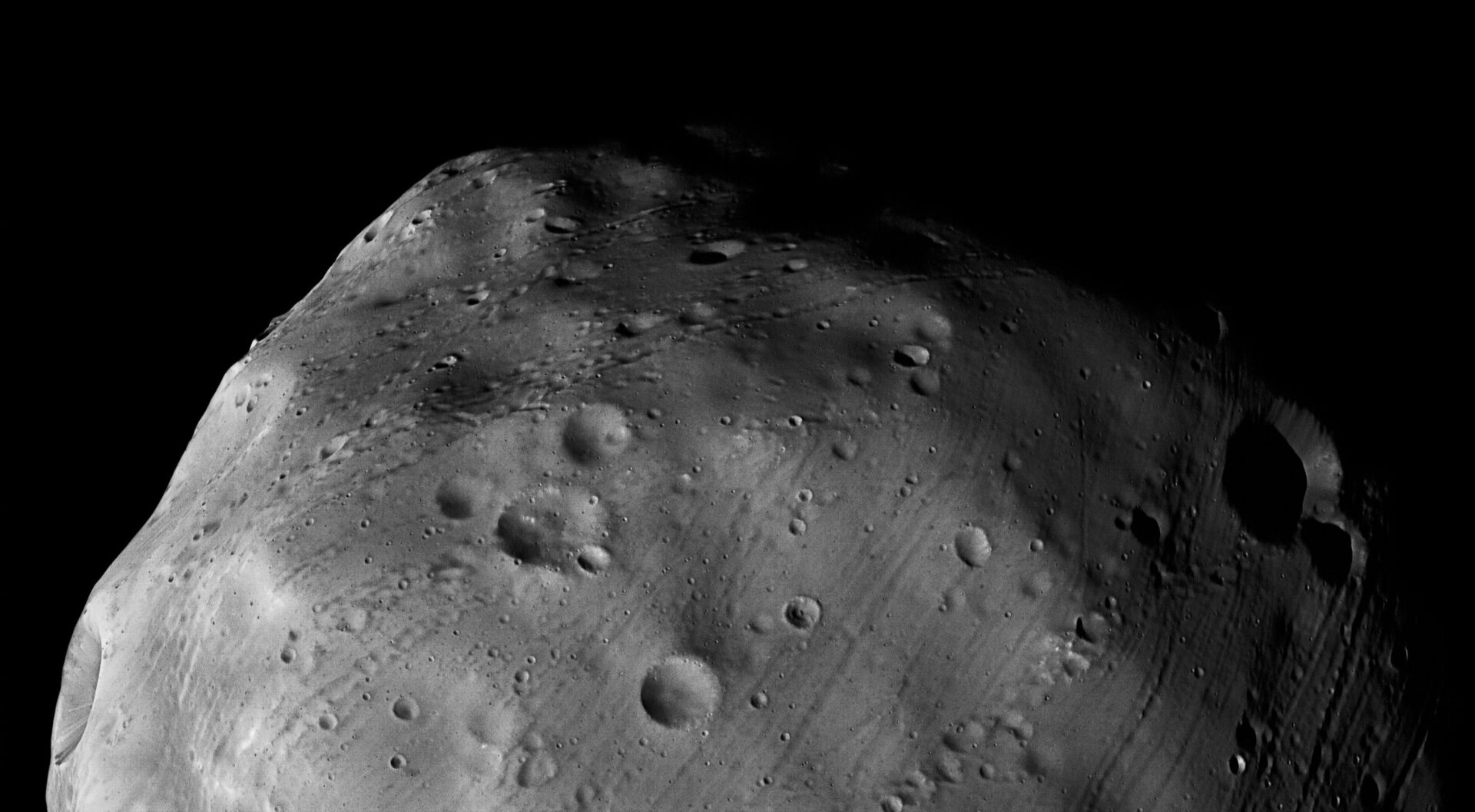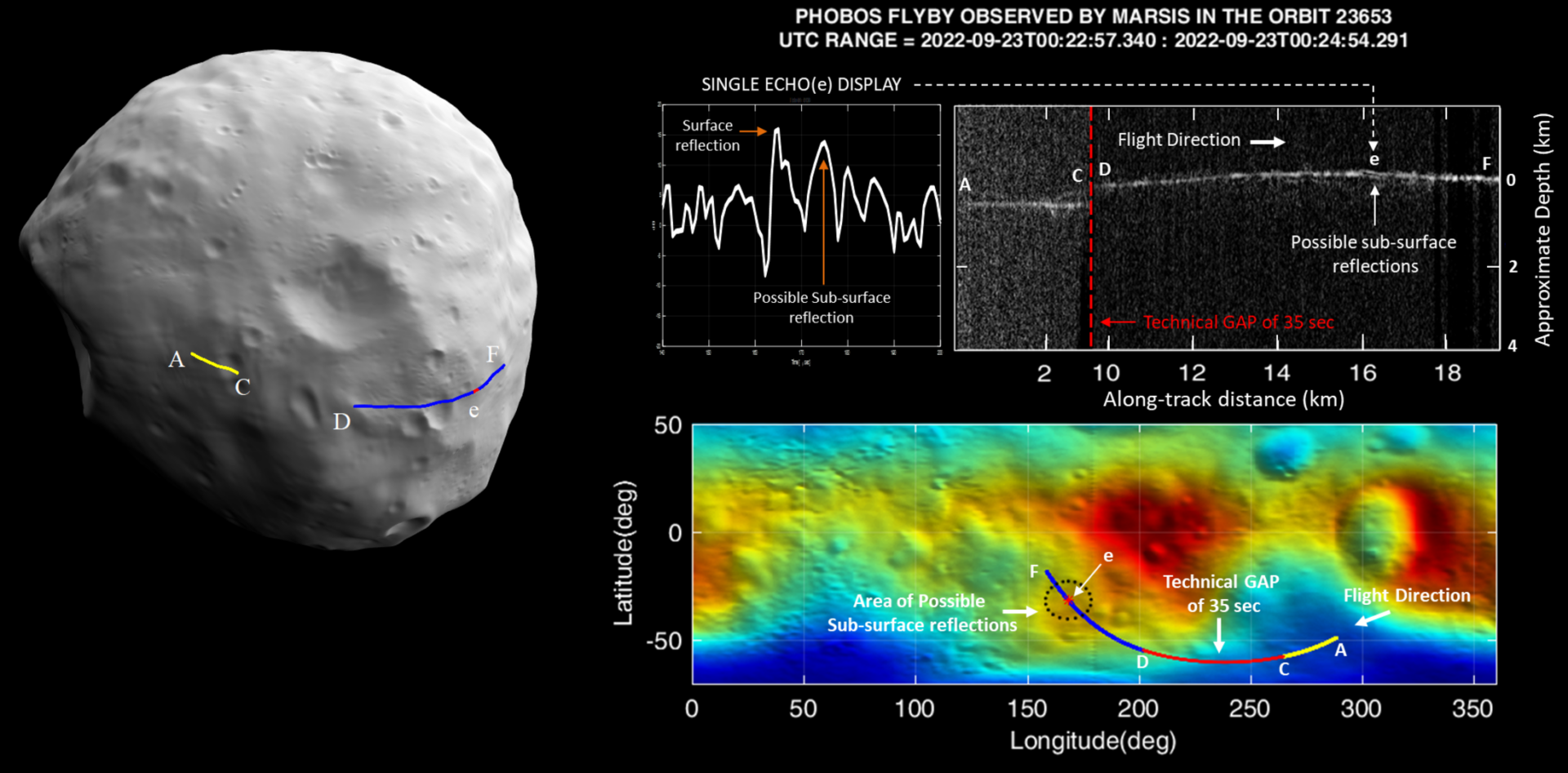The European Space Agency (ESA) Mars Express orbiter can already be called a veteran of space research, it was launched back in 2003. But it still makes new discoveries and works tirelessly for the benefit of science. Recently, the spacecraft received a software update for its Mars Advanced Radar for Subsurface and Ionosphere Sounding (MARSIS) instrument and studied Phobos, one of the moons of Mars, in more detail. The main mystery for astronomers remains its unknown origin.

Phobos and Deimos are two miniature moons of Mars, named after the Greek gods of fear and panic. But none of them looks like an ordinary moon. Both of them are small: the size of Phobos is 26.8 km across, and Deimos is 12.4 km, and they look more like lumpy asteroids than a spherical moon like the Earth has. It is not surprising that such sizes and shapes have long divided astronomers in explaining hypotheses about their origin.
“Their appearance suggests that they were asteroids, but the way they orbit Mars may indicate something else,” explains Mars Express scientist Colin Wilson.
MARSIS Discovery
This is where MARSIS performs. Thanks to a 40 m long antenna, the instrument is able to emit low-frequency radio waves that can penetrate deep into the core of Phobos to scan various materials inside the mini-moon. Most of these waves are reflected from the surface, but some pass and are reflected at the boundaries between layers of different materials below the surface. By studying the reflected signals, scientists can predict the structure beneath the surface of a moon or planet and study properties such as the thickness and composition of the material.

The study of these reflections could form a better picture of the subsurface structures of Phobos, as well as determine their overall composition. Bright lines on the radar diagram indicate signs of previously unseen mysterious underground structures.

To solve the mystery of the find, ESA will collaborate with the Japanese Space Agency to collect samples from the surface of Phobos as part of the Martian Moon Exploration (MMX) mission, which is scheduled for 2024.
According to ESA
Follow us on Twitter to get the most interesting space news in time
https://twitter.com/ust_magazine

